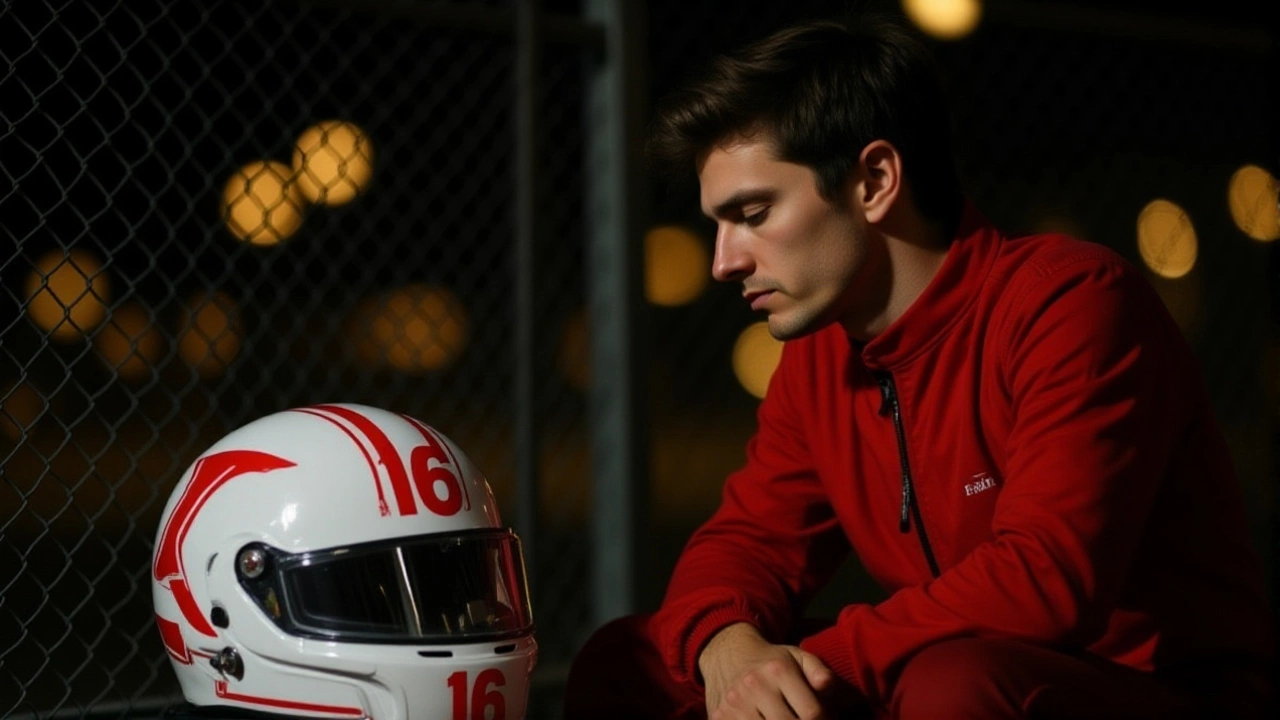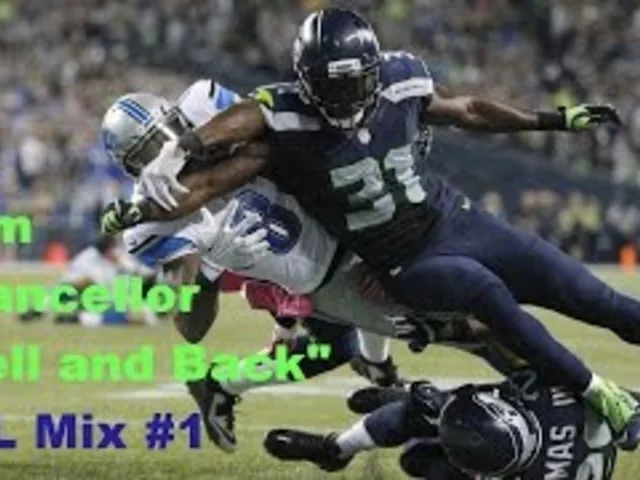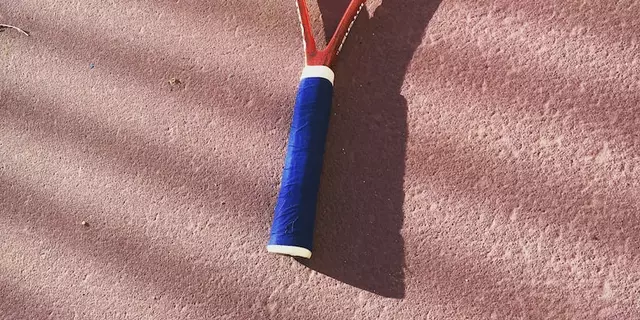Charles Leclerc didn’t mince words after Saturday’s qualifying session at the Las Vegas Grand PrixLas Vegas Strip Circuit. "It was fucking embarrassing," he said, staring at his telemetry screen in the garage, the scent of wet rubber still hanging in the air. The Charles Leclerc, 27, the Monegasque driver for Scuderia Ferrari Mission Winnow, qualified ninth — barely scraping into Q3 — while his legendary teammate, Sir Lewis Carl Davidson Hamilton, a seven-time world champion, was eliminated in 20th. The rain had stopped, but the track? Still a skating rink. And Ferrari’s SF-25? It was sliding like it had no business being on asphalt.
Wet Conditions Expose Deep-Rooted Flaws
The Las Vegas Grand PrixLas Vegas Strip Circuit has always been a wild card — a temporary street circuit carved out of neon-lit boulevards in Paradise, Nevada. But on November 22, 2025, it became a mirror for Ferrari’s most stubborn weakness: wet-weather performance. Drivers used Wet tires in Q2, then switched to Intermediates in Q3 as the track dried just enough to be dangerous — not safe. The problem? Ferrari’s car simply didn’t grip. Not in the fast sweepers. Not in the tight hairpins. Not even when Leclerc pushed harder than he ever has.
Telemetry from Q3 showed the Scuderia Ferrari Mission Winnow SF-25 losing up to 0.8 seconds per corner compared to McLaren Racing Limited’s MCL38, especially through Turns 7 and 14, where the track’s gradient shifts created instability. "It felt like driving a shopping cart with bald tires," Leclerc later told his engineer. "The rear just didn’t want to stick. You’d turn in, and it’d snap sideways like it had a mind of its own."
A History of Frustration Since 2019
This wasn’t a one-off. Leclerc joined Ferrari in 2019. Since then, every wet race has been a nightmare. In 2021, he lost a podium in Sochi. In 2023, he was spun out by a spray of water in Monza. Even Carlos Sainz Jr., his predecessor, couldn’t get the car to behave in the rain. Hamilton, despite his 103 career wins, couldn’t set a competitive lap in FP3. The team red-flagged Free Practice 3 twice because of a rogue manhole cover on the Las Vegas Strip — a bizarre, almost symbolic distraction that robbed them of critical setup data.
"It’s not just me," Leclerc said. "Carlos didn’t fix it. Lewis didn’t fix it. No one has. We’ve had new aerodynamics, new tires, new engineers — but the car still panics in the wet. It’s like the soul of this team is broken when it rains."

Race Strategy Backfires
On race day, Sunday, November 23, 2025, Leclerc drove like a man possessed. He passed Fernando Alonso, Isack Hadjar, and Oscar Piastri in the opening laps, climbing from ninth to fourth. But Ferrari’s decision to run a high-downforce setup — meant to maximize grip in the damp qualifying — became a death sentence on dry tires. The car had no straight-line speed. No overtake potential. When Piastri undercut him on fresh Mediums during the second stint, Leclerc was powerless. He was stuck behind the McLaren, DRS useless because Piastri was already in DRS range of Kimi Antonelli ahead of him.
"I felt like the pace was there," Leclerc said post-race, voice tight. "But we did something wrong. We chose grip over speed. And in Vegas, where you need both, that’s suicide. I had to take insane risks to stay ahead — and even then, I couldn’t hold him."
What’s Next for Ferrari?
Team Principal Frédéric Vasseur, 56, acknowledged the problem publicly after the race: "We’re not happy. We know we’re not competitive in the wet. We’re working on it — but it’s complex. It’s not one part. It’s the whole package." The team has been testing new suspension geometry and revised traction control algorithms since Silverstone, but nothing has translated to race-day results.
Analysts point to the SF-25’s front wing design — optimized for high-speed downforce on dry tracks — as a root cause. In the wet, that same wing creates turbulent airflow over the rear tires, reducing mechanical grip. McLaren, by contrast, runs a more forgiving front wing that allows better tire interaction with wet surfaces.
With only two races left in the 2025 season, Ferrari’s chances of catching Red Bull in the constructors’ championship are slipping. But the bigger threat? Morale. Leclerc, once the face of Ferrari’s resurgence, is now visibly frustrated. Hamilton, despite his age and experience, has remained silent — a rare sign of disillusionment.

Why This Matters Beyond the Track
Ferrari isn’t just losing races. They’re losing credibility. In Formula 1, where every millisecond counts and every wet-weather performance is scrutinized, a team that can’t adapt in rain is seen as fundamentally flawed. Sponsors notice. Fans notice. Drivers notice. And Leclerc — the youngest Ferrari driver to win a Grand Prix since Michael Schumacher — is starting to wonder if he’ll ever drive a Ferrari that doesn’t let him down when it matters most.
Frequently Asked Questions
Why does Ferrari struggle so badly in the wet compared to other teams?
Ferrari’s SF-25 has a front wing and aerodynamic balance tuned for maximum downforce on dry tracks, which creates turbulent airflow over the rear tires in wet conditions, reducing mechanical grip. Teams like McLaren and Red Bull prioritize tire interaction over pure downforce, giving them better traction when the track is slippery. Telemetry shows Ferrari loses up to 0.8 seconds per corner in wet Q3 sessions compared to rivals.
Has Ferrari ever won a race in the wet since Leclerc joined in 2019?
No. Since Charles Leclerc joined Ferrari in 2019, the team has never won a race in wet or mixed conditions. Their best result was a third place by Carlos Sainz Jr. in the 2021 Italian Grand Prix — a race that started wet but dried quickly. In full-rain races, Ferrari’s best finish is fifth, and that was in 2020 at the Portuguese GP.
How did Lewis Hamilton perform in wet conditions this season?
Hamilton, despite his experience, has also struggled in wet conditions with Ferrari, finishing outside the top 10 in all three wet races this season. He was eliminated in Q1 in Las Vegas and failed to set a representative time in FP3 due to red flags. His comments have been unusually quiet, suggesting he’s as frustrated as Leclerc — and perhaps more surprised, given his history of wet-weather mastery.
What changes is Ferrari making to fix this?
Ferrari has been testing revised suspension geometry, updated traction control software, and a new front wing design since Silverstone. Engineers are also re-evaluating tire warm-up strategies for wet conditions. However, wind tunnel data hasn’t translated to track success. The team admits the issue is systemic — not isolated to one component — making a quick fix unlikely before the 2026 season.
Could Leclerc leave Ferrari because of this?
Leclerc’s contract runs through 2026, and he’s never publicly hinted at leaving. But privately, sources say he’s growing weary of Ferrari’s inability to solve fundamental issues. With Red Bull and McLaren showing consistent wet-weather superiority, and Mercedes making strides, Leclerc may have to choose between legacy and performance — and right now, Ferrari’s wet-weather record is making that choice harder.
Is the Las Vegas Strip Circuit particularly bad for wet conditions?
Yes. The circuit’s smooth asphalt, combined with drainage issues from street-level infrastructure and frequent temperature swings, makes it one of the worst tracks for wet racing. The manhole cover incident in FP3 wasn’t just a mechanical issue — it highlighted how fragile the surface is. Even small amounts of water pool unpredictably, and the gradient changes in Turns 7 and 14 amplify car instability — a perfect storm for Ferrari’s weaknesses.






